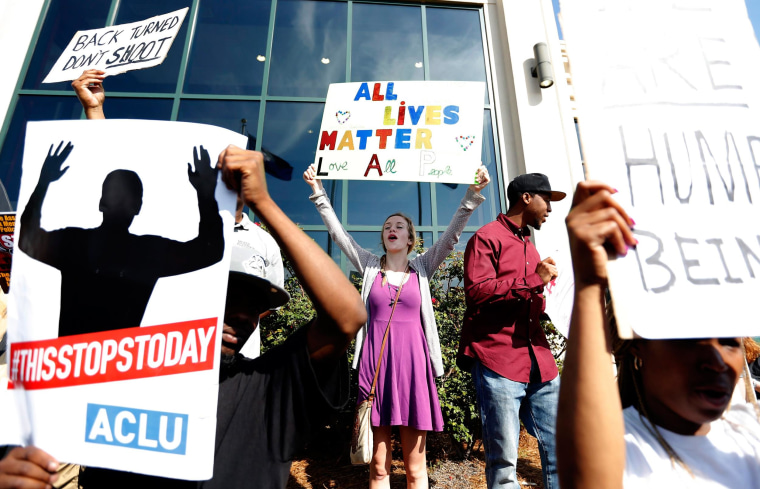The police shooting in North Charleston, South Carolina has generated more calls for changes in how police use deadly force. But the official response is very different from the most recent high-profile shooting -- in Ferguson, Missouri.
Among the contrasts:
-- South Carolina authorities acted quickly once they saw the video, arresting the officer and then firing him.
-- In Ferguson, police put officer Darren Wilson on administrative leave but declined to release his name for six days after the shooting.
-- In South Carolina, the mayor and police chief met with members of the victim's families.
-- In Ferguson, authorities criticized the victim and released a video they said showed him robbing a store before the shooting.
The circumstances of the shootings themselves were also different. Murder charges have been filed in South Carolina, while in Ferguson, state and federal investigators concluded the shooting of Michael Brown was self-defense.
And there's another critical difference -- the existence of video.
"Video takes an immediate hold on the public psyche," according to Chuck Wexler of the Police Executive Research Forum. "It requires officials to act immediately, before public sentiment gets ahead of the facts."
Video can be critical in bringing charges. It led to the prosecution of Los Angeles police officers in 1991 for beating a black driver, Rodney King. More recently, it spurred the Justice Department to investigate the apparent choking death of a black man, Eric Garner, by a white New York City police officer.
"In Ferguson, we had disputed testimony, ranging from claims that Michael Brown was charging Officer Wilson to statements that he was compliant," says Prof. William Yeomans, a former Justice Department civil rights prosecutor, now at American University's Washington College of Law.
"Here we have this latest shooting on video, and there simply is no dispute about how that segment of it went down. It's clear that Walter Scott was running away and was not armed. So it's much more difficult to make the argument that he posed a danger."
IN-DEPTH
-- Man Tasered by Cop Involved In Walter Scott Shooting Speaks Out
-- Walter Scott Shooting Follows Michael Brown and Other Fatal Cop Encounters

